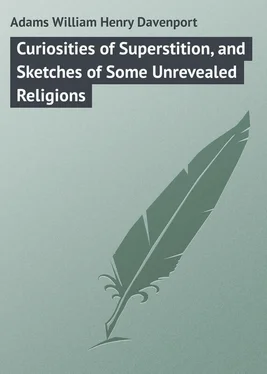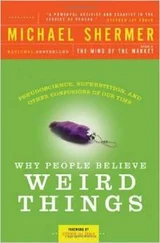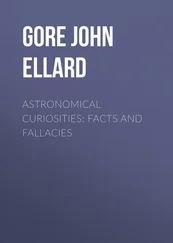William Adams - Curiosities of Superstition, and Sketches of Some Unrevealed Religions
Здесь есть возможность читать онлайн «William Adams - Curiosities of Superstition, and Sketches of Some Unrevealed Religions» — ознакомительный отрывок электронной книги совершенно бесплатно, а после прочтения отрывка купить полную версию. В некоторых случаях можно слушать аудио, скачать через торрент в формате fb2 и присутствует краткое содержание. Жанр: foreign_language, foreign_prose, на английском языке. Описание произведения, (предисловие) а так же отзывы посетителей доступны на портале библиотеки ЛибКат.
- Название:Curiosities of Superstition, and Sketches of Some Unrevealed Religions
- Автор:
- Жанр:
- Год:неизвестен
- ISBN:нет данных
- Рейтинг книги:4 / 5. Голосов: 1
-
Избранное:Добавить в избранное
- Отзывы:
-
Ваша оценка:
- 80
- 1
- 2
- 3
- 4
- 5
Curiosities of Superstition, and Sketches of Some Unrevealed Religions: краткое содержание, описание и аннотация
Предлагаем к чтению аннотацию, описание, краткое содержание или предисловие (зависит от того, что написал сам автор книги «Curiosities of Superstition, and Sketches of Some Unrevealed Religions»). Если вы не нашли необходимую информацию о книге — напишите в комментариях, мы постараемся отыскать её.
Curiosities of Superstition, and Sketches of Some Unrevealed Religions — читать онлайн ознакомительный отрывок
Ниже представлен текст книги, разбитый по страницам. Система сохранения места последней прочитанной страницы, позволяет с удобством читать онлайн бесплатно книгу «Curiosities of Superstition, and Sketches of Some Unrevealed Religions», без необходимости каждый раз заново искать на чём Вы остановились. Поставьте закладку, и сможете в любой момент перейти на страницу, на которой закончили чтение.
Интервал:
Закладка:
But it cannot be admitted that the defects of the Talmud are trivial, any more than that the spirit of the Rabbins towards Christianity was tolerant. Nor can it be admitted that the Talmud owes nothing to the Christian Scriptures.
On the first point hear what Professor Hurwitz says: – “The Talmud contains many things which every enlightened, nay, every pious Jew, must sincerely wish had never appeared there, or should at least long ago have been expunged from its pages. Some of these Agadatha are objectionable per se ; others, indeed, are susceptible of explanations, but without them are calculated to produce false and erroneous impressions.” So much may be said, we think, of the legends in the Talmud; such as the size of Leviathan and the way in which he is to be killed and cooked for the chosen people, and the marriage of Adam with Lilith before the creation of Eve, with the diabolic progeny which sprang from them.
Another point to be considered is the influence of the Alexandrian books, commonly known by us as the Apocrypha. Of these the Books of Wisdom and Ecclesiasticus at any rate exhibit the reflections of singularly devout and thoughtful minds, which had exercised themselves in the contemplation of the writings of Moses and the prophets in combination with no inconsiderable tincture of Greek philosophy. It would be a question of great interest to see how far ideas suggested in those very remarkable compositions have found their way into the Talmud.
As regards the sentiments of the Rabbins towards Christianity: in the reign of Domitian, (that is, about A.D. 90,) the Sanhedrim took measures against the Minim, that is to say, the degenerated; for so they called the Jews who had been converted to Christianity. The Rabbi Tarphon said: – “The Gospels and all the books of the Minim deserve to be burnt, for Paganism is less dangerous: the Pagans misunderstand the truths of Judaism from ignorance, the Minim deny them with full knowledge of the case. Better to seek an asylum in a Pagan temple than in the synagogues of the Minim.” The Sanhedrim of Jamnia and other similar bodies adopted the like tone. And it was men like these who helped to form the Talmud.
Not the less it remains true, that every powerful movement which has occurred in the world’s history has shown a part of its power in the way it has influenced opponents. The Reformation, as the Ultramontane De Maistre is compelled to admit, wrought a very perceptible change even among Roman Catholics. The French Revolution of 1793 did not leave Legitimists in the position they had occupied before its outbreak. Now Christianity is the greatest movement the world has ever seen. Dean Merivale in his excellent “History of the Romans under the Empire,” states with no less eloquence than truth the immense indirect influence which it had begun to exercise on heathen thought by the end even of the first century. We can trace it in Pagan literature. But Deutsch and similar Talmudophilists would have us believe that it had no influence whatever upon the Talmud, and that whenever we find kindred thoughts in the teaching of Christianity, and in the teaching of their favourite work, it is the Gospel which is indebted to the Talmud and not the Talmud to the Gospel.
But for our part we wholly dissent from this extraordinary theory, which, indeed, cannot be supported by any chronological evidence. There are occasions, of course, in which dates become of comparatively trifling importance. A man feels troubled, for example, with the enigmas of life, and finds light and consolation in reading the book of Job; that most beautiful book — quel bellissimo libro , as the Italian poet Giusti called it. Some friend, finding him thus engaged, begins to argue in favour of Bishop Warburton’s view, that it is a composition of comparatively late date, perhaps of the age of Jeremiah, and not (as used to be generally supposed) as early as the time of Moses. In such a case a man may well reply, that without any wish to discourage critical inquiry in its proper place, he is content for the present to go on reading for his soul’s health, to accept the words before him as a message from above, and to feel sure that whenever God gave it, it was given at the time when it was most needed. But in the case of the Talmud dates are of real and living importance, though we own that it is difficult to fix them with accuracy. We believe, however, with one of Deutsch’s critics, that Christian elements have found their way into the Talmud, though doubtless, pre-Christian ideas, similar to those which are met with in the Books of Wisdom and Ecclesiasticus, are also to be found there. Is it not true that the Mishna was brought into its present form by Rabbi Jehudah, surnamed the Holy, about A.D. 200, and that the Gemara was not completed until A.D. 500? Deutsch, indeed, appeals to the article in the “Novellæ Constitutiones” (or Novels , as they are commonly called) of Justinian against the Talmud. The reference is correct enough, but the Novels belong to the later parts of Justinian’s reign, and were not promulgated before the year 534.
It is well known that at the present time there are three parties among the Jews who differ widely as to the amount of respect which ought to be paid to the legislation contained within the pages of the Talmud. Two out of these parties would greatly modify it, or actually sweep it away. We believe that its influence upon practice is not destined to endure; and that though there is a book which will continue so to influence life, that book is not the Talmud, but the Bible. The Talmud has its curiosities and even beauties, as well as its gross absurdities and defects; but, after all, it will be found, we believe, that it often reflects but too truly the mind of those of whom it was said, “Ye have made the commandment of God of none effect by your traditions.”
With these preliminary observations, we pass on to a more particular description of the Talmud.
There are two Talmuds, the one called the Talmud of the Occidentals, or the “Jerusalem” Talmud, and the other the “Babylonian” Talmud. The former of these originally included the whole of the first five Sedarim (or portions,) but now consists of only thirty-nine treatises. Its final redaction is supposed to have taken place towards the close of the fourth Christian century, but the authorities engaged in the work cannot now be determined. But it is certainly distinguished by more accuracy of expression and precision of statement than the second or Babylonian, or “our” Talmud, which makes use of its predecessor, and was not completed for a century later. Its editor is generally considered to be Rabbi Ashi, president of the Academy of Syro in Babylon (A.D. 365-427.) Both the Mishna, though revised in A.D. 219, and the “Palestine” Gemara, had become greatly corrupted through the interpolation of gross traditions and the critical judgments of different schools, when Rabbi Ashi, with the assistance of his friend and disciple, Abina, undertook the labour of sifting the old from the new, and introducing order into chaos.
Ashi was appointed to the headship of the school of Sora at the age of twenty-three, and under his rule Sora became the head-quarters of Rabbinism in the East. When he entered on the redaction of the Mishna and Gemara, he began by assembling yearly at the great feasts the most learned Hebrews, and examining them with respect to their traditional practices and expositions. He then called together his disciples every spring, and gave out to them a particular treatise of the Mishna; in the autumn they again came before him with all the information relative to it they had collected in the interval. This he personally investigated, and reduced into shape. The Mishna being composed of sixty-three treatises, he was thus engaged for upwards of thirty years. The final revision occupied him twenty-two years. At the time of his death (in his seventy-fifth year) the work was all but completed; the last touches were given by his friend, Rabbi Abina.
Читать дальшеИнтервал:
Закладка:
Похожие книги на «Curiosities of Superstition, and Sketches of Some Unrevealed Religions»
Представляем Вашему вниманию похожие книги на «Curiosities of Superstition, and Sketches of Some Unrevealed Religions» списком для выбора. Мы отобрали схожую по названию и смыслу литературу в надежде предоставить читателям больше вариантов отыскать новые, интересные, ещё непрочитанные произведения.
Обсуждение, отзывы о книге «Curiosities of Superstition, and Sketches of Some Unrevealed Religions» и просто собственные мнения читателей. Оставьте ваши комментарии, напишите, что Вы думаете о произведении, его смысле или главных героях. Укажите что конкретно понравилось, а что нет, и почему Вы так считаете.












